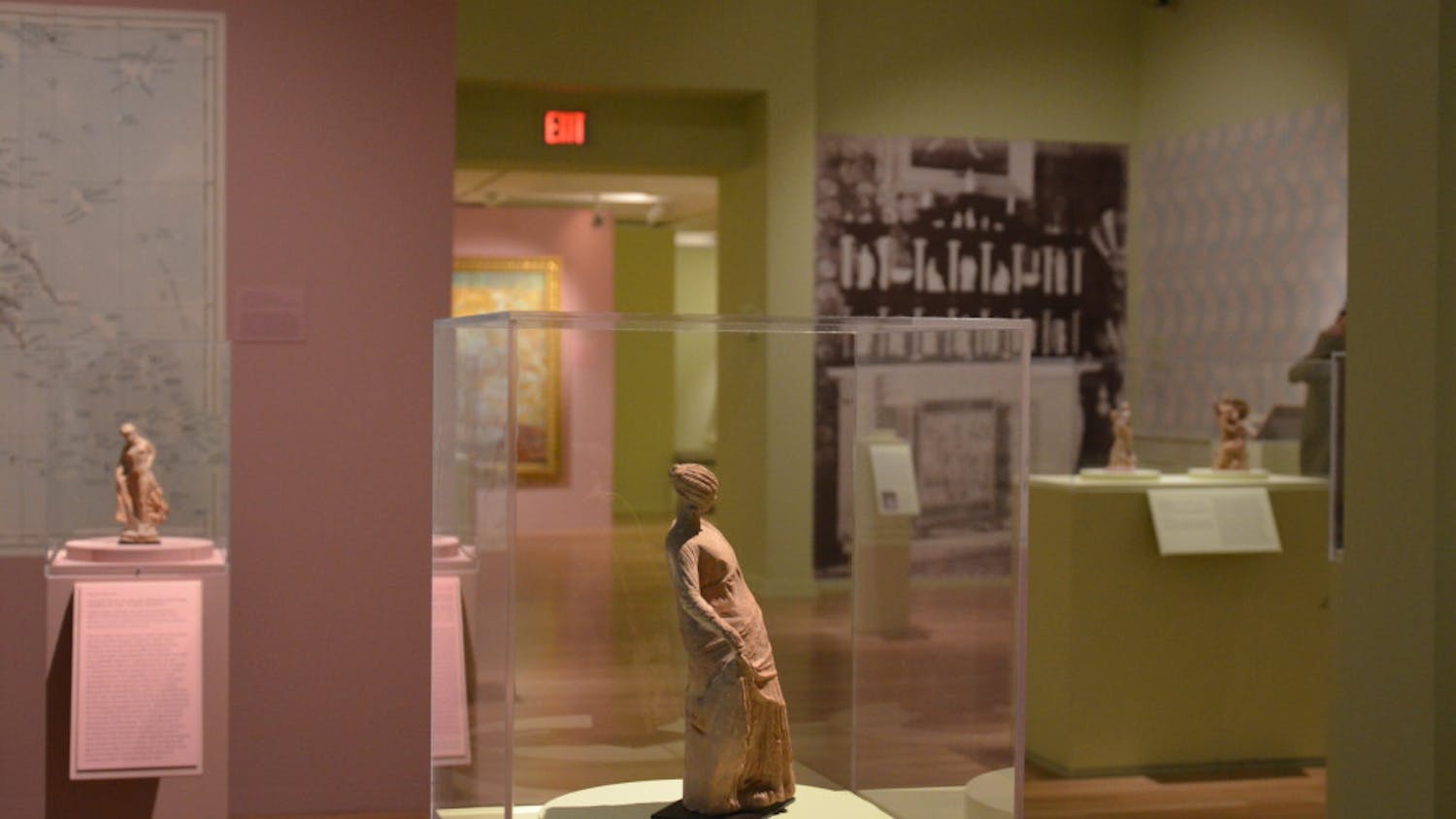This review contains mentions of sexual assault.
The COVID-19 pandemic has seen musical artists performing over Zoom, Michelin-starred restaurants serving food in plastic to-go containers and mannequins replacing humans at professional sports games. Entertainment has certainly had to adapt and museums are no exception. The National Gallery of London set a fantastic example of this kind of innovation with “Artemisia,” an exhibition that opened in October 2020, right before the second U.K. lockdown that led to several museum closures.
The museum filmed a 30-minute tour of an exhibit led by Letizia Treves, James and Sarah Sassoon curator of later Italian, Spanish and French 17th-century paintings. I watched the virtual tour on Jan. 10, catching it just before it ended on Jan. 20. This personal, curated experience examined Artemisia Gentileschi as a woman, survivor of rape, creative marketer and master painter. “Artemisia” is a five-star tour of a five-star exhibition, which felt like a true celebration of female empowerment.
I was wary of how the National Gallery would pull off a 30-minute virtual tour without boring the audience and disconnecting viewers from the meaning or power of artworks they usually experience when in-person. Nevertheless, the organization of the tour, information pacing and Treves’ fascinating expertise enraptured me right from the outset. The span of this retrospective exhibition covers Gentileschi’s first works as a teenager to her later works in her 40s, and allows Treves to recount Gentileschi’s life and reveal her personality, beliefs, passions, skill and determination.
Everything about this tour felt intentional. As Treves walked through the exhibition, I was struck by the bold blue of her suit and how it mirrored the deep navy colors of the gallery walls. The artworks are arranged according to events in Gentileschi’s life and location, making it easy for the viewer to follow her journey. After Treves walked the viewers through the entire gallery, she returned to specific paintings to emphasize certain ideas and point out important details.

The most striking artwork in the galleries, and possibly Gentileschi’s most famous, is “Judith Beheading Holofernes,” depicting Judith killing Holofernes, an Assyrian general sent to destroy her home. While not as grandiose as her works from Naples or as dramatically lit as “Mary Magdalene in Ecstasy,” its emotionality is incomparable. The intent behind this artwork is often diminished by scholars to merely represent Gentileschi’s own vengeful thoughts toward her rapist who sexually assaulted her when she was 17, but, as Treves pointed out, it represents far more. The painting is a masterpiece of both technical and emotional merit, depicting strength, resolve and female prowess.
According to Treves, Gentileschi was known for realistically characterizing her female protagonists and painting them with such emotion, ability and vigor that the viewer cannot help but empathize with them. Gentileschi was an artist who broke sexist stereotypes in faithfully representing women’s issues and perspectives as one of the few successful female painters of that time. Women are not easily admitted into the canon of great art, nor are they easily accepted in fields of academia, yet both Gentileschi and Treves broke those barriers in this tour.
Gentileschi was well aware of the barriers she faced and the actions she took to overcome them, once writing, “I have the spirit of Caesar and the soul of a woman.”
I delighted in the way Treves used Gentileschi’s paintings and letters to examine both the sexism Gentileschi faced, as well as the fighting spirit and resiliency that showed through every stage of her life. Treves also examined Gentileschi’s adaptability as a marketer, specifically focusing on how Gentileschi adapted her technique to appeal to different patrons and artists of the time, all while remaining faithful to her female protagonists. Museum labels often avoid inserting the artist’s voice when discussing their artworks, but I admired how this tour provided a unique perspective on the artist and her experiences. What I learned couldn’t be obtained by simply reading the labels in the gallery: Gentileschi’s artistic transformation demonstrates not weakness or lack of spirit, but incredible business acumen.
The exhibition concludes with one of the most fascinating comparisons I have ever seen: one between Gentileschi and her father Orazio, also a painter. Two paintings, both of Queen Esther speaking to King Ahasuerus, are displayed side by side, by father and daughter. Gentileschi’s version shows a certain humanity and affectation of both figures, as though the painter was in the shoes of the regal Queen Esther. Orazio’s is devoid of such emotion, focused instead on painterly skill itself and Esther as a nude, desperately pleading figure. It’s rare to make such a comparison when viewing art online, and I appreciated how this virtual tour embraced those special observations and ensured viewers would experience the same narrative and detailed analysis that physical museum spaces allow.
The “Artemisia” exhibition introduction describes Gentileschi as one of the greatest storytellers of her time by defying expectations of the 17th-century woman and, in her own words, showing “what a woman can do.” This tour, in that same vein, defied my expectations of what a virtual tour could be and showcased exactly what a woman can do as an academic, artist, curator and marketer.





